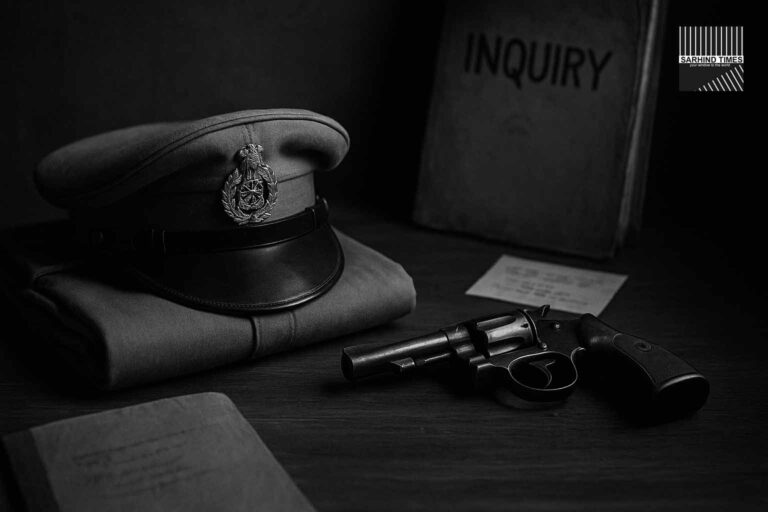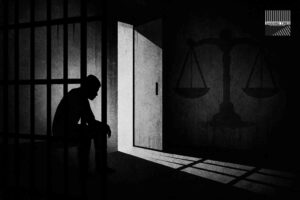New Delhi, Sept 26, 2025 — A five-judge Constitution Bench of the Supreme Court has reserved its judgment on a question with potentially sweeping consequences for judicial recruitment across India: can serving judicial officers (civil judges, subordinate judges etc.) compete for district judge posts reserved exclusively for advocates (the so-called “Bar quota”)?
Over three days of arguments, the Bench led by Chief Justice B.R. Gavai and comprising Justices M.M. Sundresh, Aravind Kumar, S.C. Sharma and K. Vinod Chandran grappled with constitutional text, precedents, service rules and equity in recruitment. Petitioners contend that once a judicial officer has completed the requisite years of advocacy prior to joining service, they should not be barred from vying under the Bar quota. Opponents warn that mixing promotional and direct recruitment streams under Article 233 could blur distinct constitutional design for lateral entry from the Bar.
The verdict, once pronounced, is expected to unsettle ongoing district judge recruitment in many states, force High Courts to revisit pending selections, and influence the balance between internal promotion and external infusion of legal talent.
Factual & Legal Background
Article 233 and the two streams of appointment
Article 233 of the Indian Constitution governs the appointment and promotion of district judges in states. It provides for two routes:
- Promotion / in-service route (Clause 1) — judicial officers within State or Union service may be appointed in consultation with the High Court.
- Direct recruitment from the Bar (Clause 2) — a person not already in the service of the Union or of the State is eligible if he/she has been an advocate or pleader for at least seven years and is recommended by the High Court.
Thus, under the textual reading, Clause 2 appears to exclude persons already in service. The core controversy is whether that exclusion is absolute or can be read flexibly to include judges who had already practised for seven years before joining service.
For decades, High Courts and many state rules have held that the Bar quota is limited to non-serving advocates, while judicial officers proceed via promotions or internal competitive exams (Limited Departmental Competitive Exams, etc.). The 2020 Supreme Court decision in Dheeraj Mor v. High Court of Delhi had reaffirmed that judicial officers cannot tap into the Bar quota.
However, several petitioners now argue that such a rigid separation is unfair to those who had prior legal practice and then joined service, and that the constitutional scheme must adapt.
The “Rejanish K.V. vs. K. Deepa” case & reference
The reference before the Constitution Bench arises from Rejanish K.V. v. K. Deepa & Ors. In that case, Rejanish, an advocate with over seven years’ experience, applied for direct recruitment as District Judge. But during the selection process, he was appointed as a munsiff (judicial service). By the time the final appointment order came, he was a judicial officer. Another candidate, K. Deepa, challenged his eligibility, invoking Dheeraj Mor. The High Court struck down the appointment, but a Division Bench referred the matter to the Supreme Court, raising the constitutional questions.
The Supreme Court, by an order of August 12, 2025, directed the Registry to constitute a five-judge Constitution Bench to address four key issues:
- Whether a judicial officer who has completed seven years at the Bar prior to service can be eligible under Bar quota.
- Whether eligibility is to be assessed at the time of application, appointment, or both.
- Whether Article 233(2) has distinct prescription for those in service.
- Whether combined period of practice + judicial service (to reach seven years) may qualify.
Key Arguments Before the Bench
Petitioners’ (in favour of inclusion)
- Doctrine of Equality & merit: Petitioners argue that restricting Bar quota to non-service advocates is discriminatory to those who had long legal practice but later joined service. Such persons bring both advocacy experience and judicial exposure, arguably a richer mix.
- Textual ambiguity & purposive reading: They contend that Article 233(2) does not explicitly forbid in-service candidates; the phrase “not already in service” should not be read as an absolute embargo. The interpretation must ensure the constitutional objective of bringing qualified legal minds into the judiciary.
- Precedents to re-examine: The petitioners ask the Court to reconsider Dheeraj Mor and related precedents in light of evolving needs of the judiciary.
- Comparative Article analogy: They draw on Article 217 (High Court appointments) where judicial service and prior practice are often integrated, to argue for symmetry.
- Avoid redundancy: If judicial officers are forever excluded, the Bar quota seats may go unfilled or attract weaker candidates. A hybrid eligibility would better serve institutional strength.
Respondents’ (against inclusion)
- Textual sanctity / original intent: Opponents argue that Article 233(2) draws a sharp line: it is meant exclusively for practising advocates, not those already in judicial service. Reading it otherwise would rewrite the Constitution from benches, not legislature.
- Stare decisis & legal certainty: They emphasize the long stretch of authoritative decisions upholding the exclusion, including Rameshwar Dayal v. State of Punjab and Chandra Mohan v. State of UP. Deviating now would unsettle recruitment rules across states.
- Separation of promotion and direct recruitment: Allowing cross-entry would blur the distinction between merit from Bar and internal promotion. Judicial officers have a guaranteed path, while the Bar quota offers lateral entry for advocates.
- Practical complications: They caution that allowing in-service candidates may lead to “backdoor entries,” confusion in rules, and claims by many officers. It may disturb promotional ladders and selection structures.
- Continuity and “practice” requirement: Some argue that the requirement of seven years practice is meant to ensure advocacy continuity — someone who quits the Bar and joins service may not maintain advocacy competence.
Justice Sundresh, during hearings, observed: “One year of judgeship is equivalent to five years of being a lawyer” — highlighting the workload differential — but questioned whether this logic should translate into eligibility.
CJI Gavai asked probing questions around how Article 233’s two clauses should be read together, and whether any exclusion should be implied.
Potential Implications & Stakes
- State Judicial Recruitment Impact
If the Bench allows judicial officers to compete under Bar quota, many ongoing or future district judge recruitment batches will need reordering or re-advertising. Some appointments may be vulnerable to writ challenges. - High Court Rule Revisions
High Courts have framed their recruitment rules in line with Dheeraj Mor interpretation. A reversal would compel them to revise rules, timelines, eligibility criteria and application norms. - Promotional Path vs Lateral Entry Balance
The decision will affect the incentive structures within subordinate judiciary: will talent be drawn to remain judicial officers or try lateral Bar entry? It can influence retirement planning, transfers, morale. - Legal & Litigant Impact
The quality of district judiciary and its independence may be affected depending on which route is favoured. Litigants may demand clarity in appointments under Bar quota. - Precedential Reworking
If Dheeraj Mor is overruled or read down, a flood of legacy petitions from civil judges denied Bar quota might arise.
Observations from the Bench & Key Phrases
- The Bench repeatedly emphasized that the interpretation must serve litigant-centric justice, not privileging lawyers or judges per se.
- Justices probed when the eligibility should be ascertained: at application, at appointment, or both. This timing nuance is key for many selected candidates.
- Some benches flagged potential absurdities: for instance, a person could practice 3 years, join judicial service, and immediately contest Bar quota, thus converting practice into a thin entry. Petitioners denied such risk.
- The Bench also questioned High Courts’ regulatory power in framing recruitment rules under state statutes — whether they can override Constitutional limits in rulemaking.
Predictive Scenarios: What the Judgment Might Be
Here are possible outcomes and their consequences:
| Scenario | Likely Holding | Effects / Risks |
| Strict exclusion (affirm Dheeraj Mor) | Judicial officers remain barred from Bar quota; only non-service advocates qualify | Maintenance of status quo; many petitioners lose; demands for constitutional amendment may increase |
| Qualified inclusion (if prior Bar practice + service) | Judicial officers who had practiced ≥7 years before joining service may be eligible, but in-service years may not count | Mixed approach, some judicial officers gain access; rules will need fine-tuning; states may adopt transitional provisions |
| Full inclusion (aggregate practice + service counting) | A combined period of practice + judicial service may count toward eligibility | Broadest change; huge litigation and rule changes; risks of dilution of Bar quota principle |
| Hybrid / threshold guardrails | In-service candidates may apply provided they fulfil additional safeguards (seniority, minimum break in practice) | Balanced route, but complexity in implementation and disputes over conversions |
What to Watch for in the Delivered Verdict
- Whether the Bench reads an implicit exclusion into Article 233(2) or finds it textually absent
- How the Court treats Dheeraj Mor — whether it overrules, distinguishes or retains it in part
- Clarification on timing: eligibility at application or appointment stage
- Decision on whether aggregate experience (practice + service) is acceptable
- Guidance to High Courts on drafting or re-drafting recruitment rules
- Transitional arrangements or protection for those who applied under older rules
Conclusion
The Supreme Court’s reserved verdict on this question sits at the intersection of constitutional interpretation, judicial recruitment policy, merit principles and internal equity in the legal profession. A decision either way will carry far-reaching consequences for the shape of India’s district judiciary, the morale of subordinate judicial officers, and the balance between internal promotion and external infusion of Bar expertise.
Whatever the outcome, states and High Courts will need to promptly revisit their recruitment practices, rulebooks and ongoing selection processes. The legal community will watch closely: this may be one of the most consequential judgments on judicial personnel in recent years.
#SupremeCourt #Judiciary #DistrictJudge #LegalNews #ConstitutionBench #IndiaLaw #BarQuota #JudicialRecruitment
























+ There are no comments
Add yours